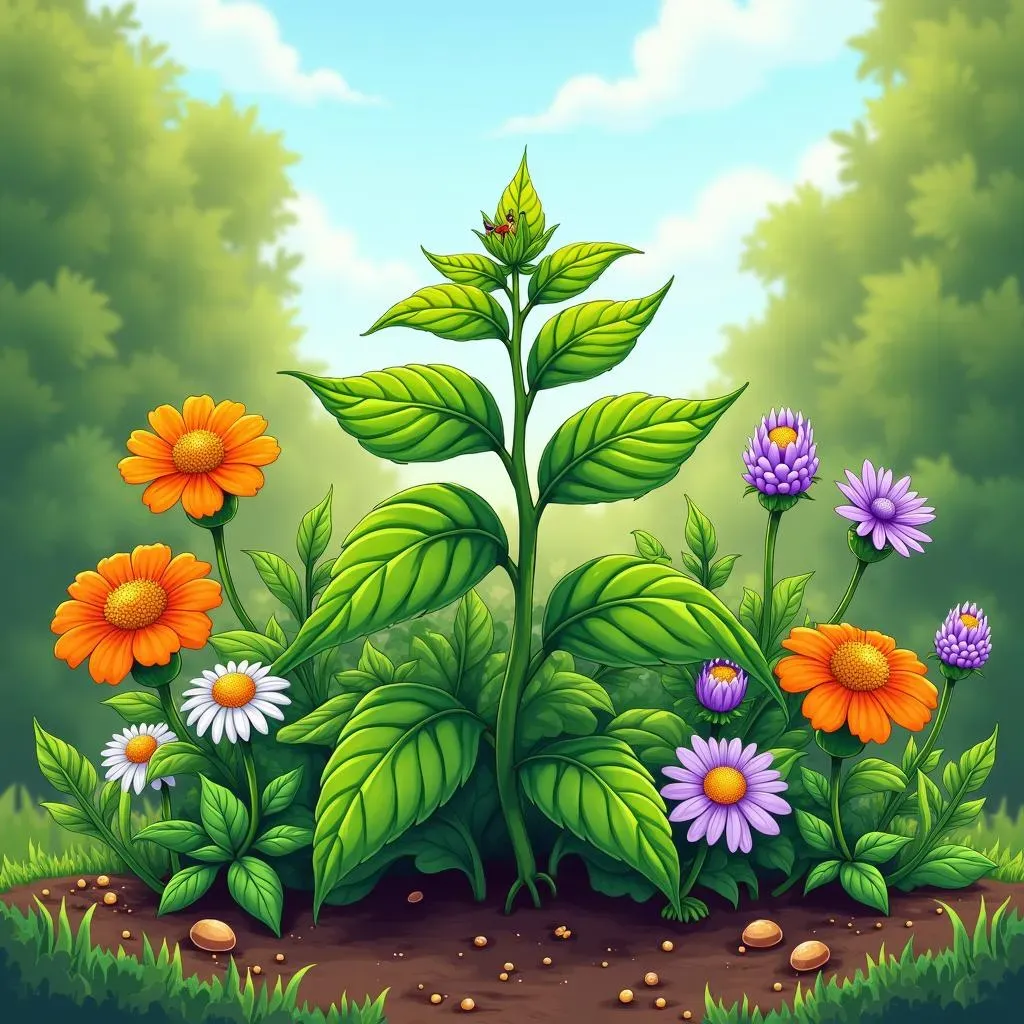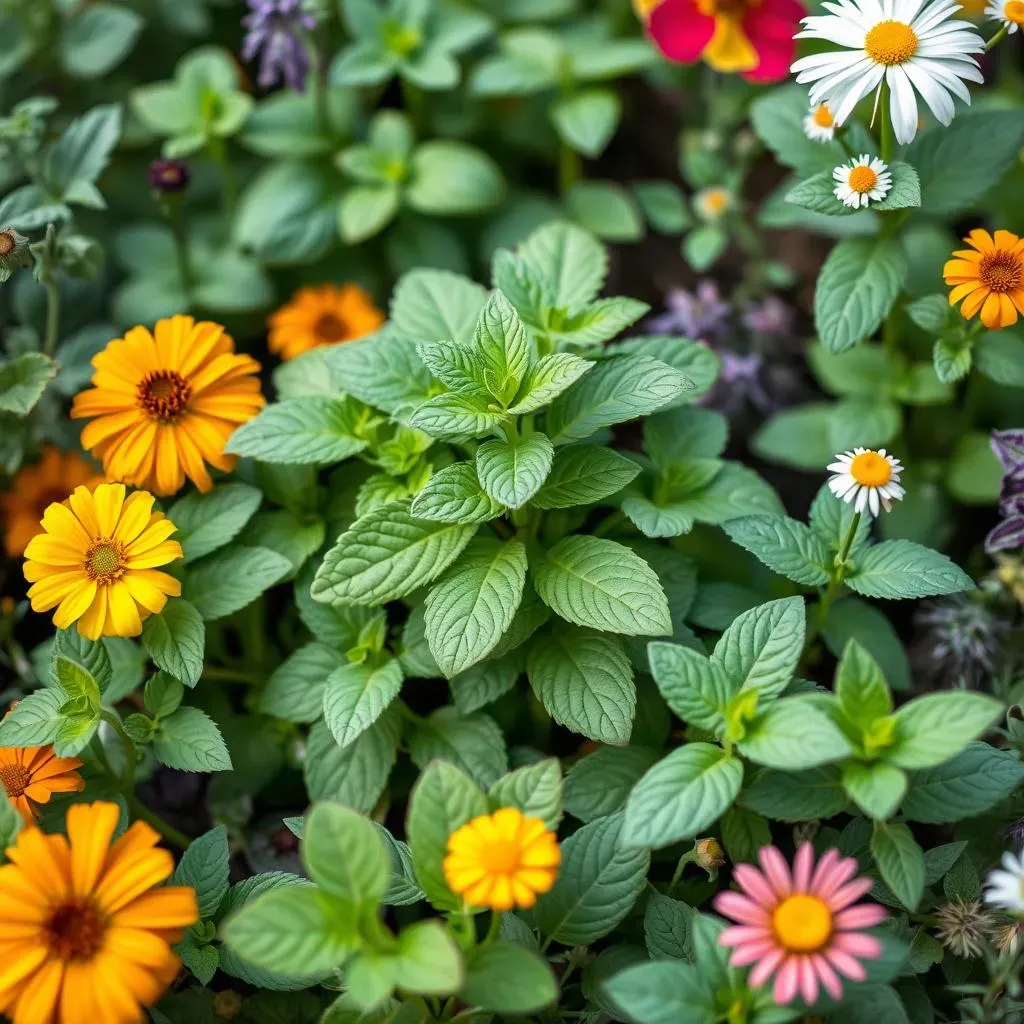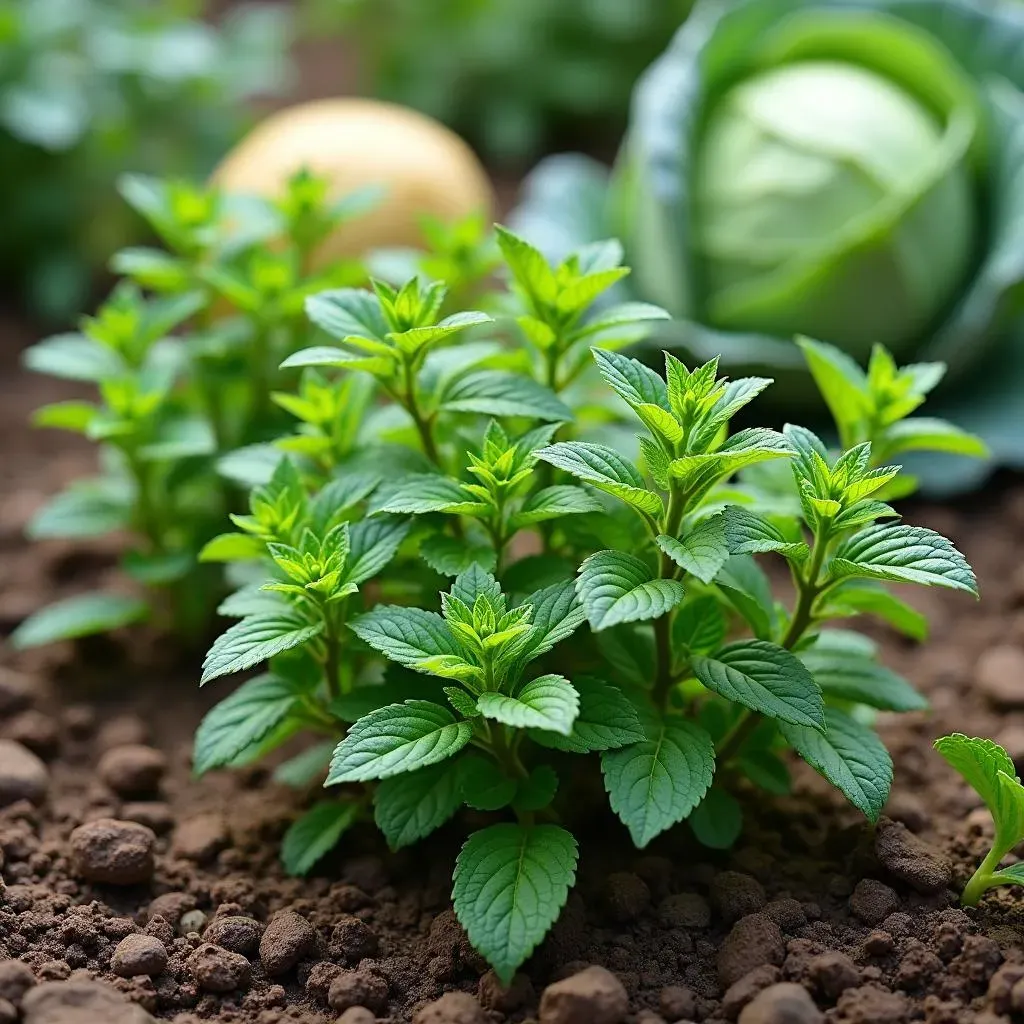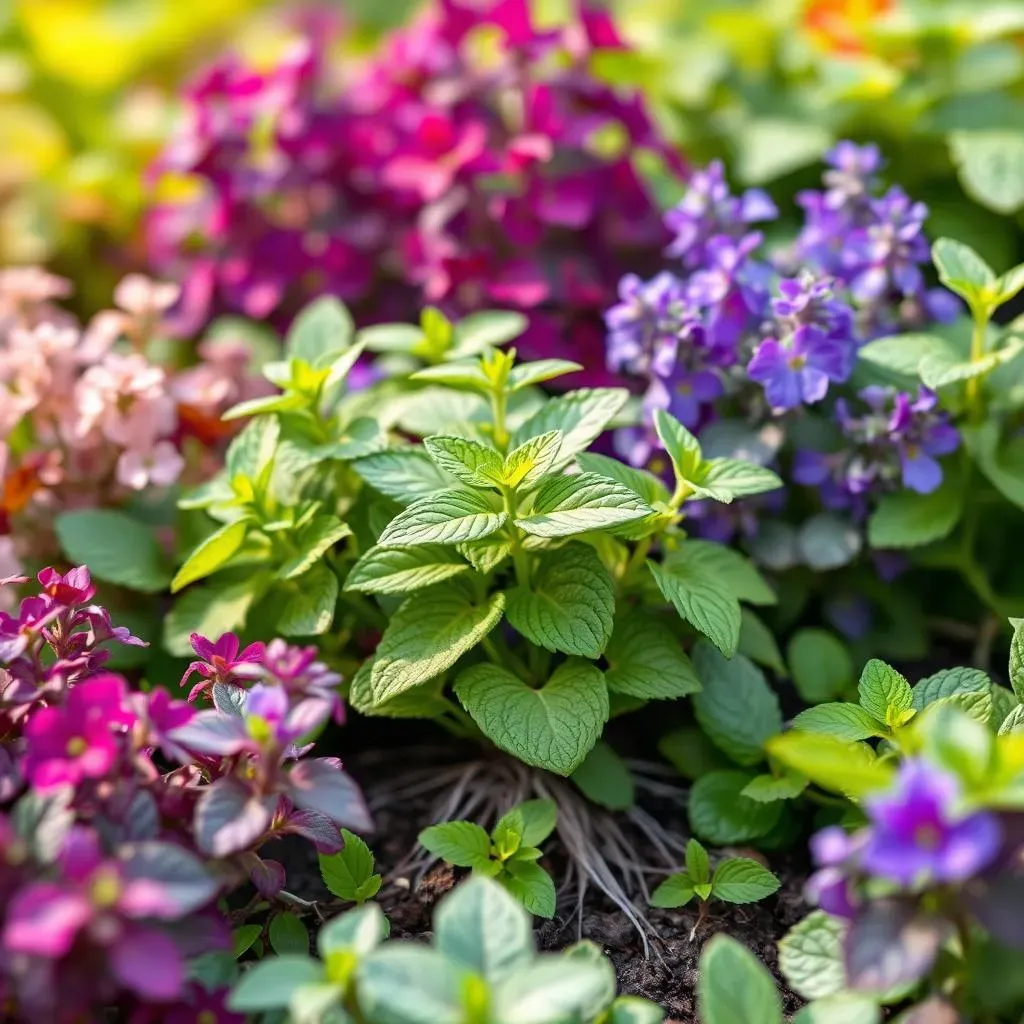Table of Contents
Ever wondered how to make your spearmint tea taste even better? The secret might be in your garden! It's not just about the spearmint tea plant itself, but who it hangs out with. We're talking about companion planting. Think of it like setting up the perfect party – you want the right mix of guests to make it a blast, not a total disaster. In this article, we'll explore the world of spearmint tea plant companion planting. We'll look at the best plant buddies that can boost your spearmint’s growth and flavor. We’ll also cover the plants to avoid – the garden party crashers, if you will. Get ready to discover how the right plant pairings can transform your tea garden into a thriving ecosystem. We will guide you through selecting the best companions for your spearmint tea plant, enhancing its growth, flavor, and overall health. By the end, you'll be ready to experiment and create your very own botanical masterpiece.
Why Companion Planting Matters for Your Spearmint Tea Plants
Why Companion Planting Matters for Your Spearmint Tea Plants
The Power of Plant Friendships
Okay, so you've got your spearmint tea plant, right? It's doing its thing, but have you ever thought about who it's hanging out with? Just like people, plants have friends and foes. Companion planting is all about choosing the right plant pals to help your spearmint thrive. It's like having a superhero team for your garden. Some plants can repel nasty bugs that want to munch on your spearmint. Others can attract helpful insects that keep the bad guys away. It's a natural way to keep your spearmint happy and healthy, without relying on harsh chemicals.
Think of it as a mini-ecosystem you're creating. When plants work together, they can improve the soil, provide shade, and even enhance each other's flavors. It's not just about survival, it's about helping each other flourish. For your spearmint tea, this means more leaves, a stronger aroma, and a better taste for your tea. So, before you just plant your spearmint anywhere, consider who might make a great neighbor.
More Than Just Pretty Faces
Companion planting isn't just some old wives' tale. It's actually based on science. Certain plants release chemicals that can deter pests, while others attract beneficial insects like ladybugs. These insects are like the garden's cleanup crew, eating aphids and other pests that would otherwise harm your spearmint. Plus, some plants can even help improve soil conditions, making it easier for your spearmint to get the nutrients it needs. It’s a win-win situation for everyone involved. It’s like having a group of friends who always have your back, making everything easier for your spearmint plant.
By choosing the right companions, you're essentially setting up a natural defense system for your spearmint. It's a smart way to garden, because it reduces the need for pesticides and fertilizers. You're working with nature, not against it. And let's be real, who doesn't want a little extra help from their plant buddies? It's all about creating a balanced, thriving garden, where everyone benefits, including your taste buds.
Benefit | How It Helps Spearmint |
|---|---|
Pest Repellence | Keeps harmful bugs away naturally |
Attracting Beneficial Insects | Brings in helpful bugs to control pests |
Improved Soil | Enhances nutrient availability |
Enhanced Flavor | Can make spearmint taste better |
Top Companion Plants for Spearmint Tea Plant Growth
Top Companion Plants for Spearmint Tea Plant Growth
Alright, so now you're probably wondering, "Who are these plant superheroes?" Well, let me introduce you to some of the best companions for your spearmint tea plant. First up, we have basil. Yes, that same basil you use in your pasta sauce! It's not just tasty; it's also a great friend to spearmint. Basil helps repel pests like aphids and flies that could cause trouble. Plus, it shares similar needs with spearmint, like well-drained soil and plenty of sun, making them easy to grow together. Think of them as the dynamic duo of the herb garden.
Next, let's talk about marigolds. These bright, cheerful flowers are more than just pretty faces. They release a substance into the soil that helps deter nematodes, tiny worm-like pests that can damage plant roots. Marigolds also attract beneficial insects, like ladybugs, which act as natural pest control. It's like having a colorful bodyguard for your spearmint. And if you're looking for a good ground cover, chamomile is your plant. It helps retain moisture in the soil and attract beneficial insects, like hoverflies, that can help keep your spearmint safe. It’s like a comfy rug for your spearmint, keeping everything nice and cozy.
Companion Plant | Benefits for Spearmint |
|---|---|
Basil | Repels aphids and flies |
Marigolds | Deters nematodes and attracts beneficial insects |
Chamomile | Retains moisture, attracts beneficial insects |
Nasturtiums | Repels aphids, attracts pollinators |
Don't forget about nasturtiums. These vibrant flowers act as a trap crop, luring aphids away from your spearmint. They also attract pollinators, which are essential for a healthy garden. It’s like giving the pests a decoy while ensuring your spearmint gets all the attention it needs. Finally, consider some of the other herbs like thyme and oregano, these little guys can help with ground cover and attract beneficial insects, helping to keep your spearmint happy and healthy. They're like the supporting cast, making sure everything runs smoothly behind the scenes.
So, when you’re planning your garden, remember that choosing the right plant friends for your spearmint tea plant can make a huge difference. These companions can protect your spearmint from pests, improve the soil, and even make it taste better. It's all about creating a little community where everyone helps each other thrive. And who wouldn't want that for their spearmint?
Plants to Avoid When Growing Spearmint Tea Plants
Plants to Avoid When Growing Spearmint Tea Plants
The Bad Neighbors
Okay, so we've talked about the plant pals, but now it's time for a little drama. Just like in life, not all plants play nice together. Some can actually cause problems for your spearmint tea plant. Think of it like having a roommate who never does the dishes – it's not going to end well. One of the biggest troublemakers is fennel. This plant releases chemicals that can inhibit the growth of other plants, including your precious spearmint. It's like a bully in the garden, pushing everyone else around.
Another plant to keep away from your spearmint is cabbage. While cabbage itself isn't directly harmful, it's a magnet for pests that can also attack your spearmint. It's like inviting a whole gang of troublemakers to your garden party. And let’s not forget about potatoes. These guys are nutrient hogs, meaning they'll suck up all the good stuff from the soil, leaving your spearmint struggling to survive. It's like having a roommate who eats all the snacks and leaves you with nothing.
Why Some Plants Just Don't Mix
It's not just about pests, though. Some plants simply compete for the same resources, like sunlight, water, and nutrients. When two plants are fighting for the same thing, neither of them will thrive. It’s like two kids fighting over the same toy – nobody wins. For example, if you plant your spearmint near potatoes, the potatoes will likely outcompete your spearmint for nutrients, leading to a weaker, less flavorful tea. The goal is to create a harmonious environment where all plants can get what they need without struggling.
Also, some plants can spread diseases that can affect your spearmint. It's like a bad cold going around the office – you want to avoid it at all costs. By keeping these problematic plants away from your spearmint, you're creating a safer and healthier environment for it to grow. It's all about being a smart gardener and understanding that not all plant pairings are created equal. Sometimes, it's best to keep certain plants in separate corners of the garden.
Plant to Avoid | Why It's Bad for Spearmint |
|---|---|
Fennel | Inhibits growth with chemicals |
Cabbage | Attracts spearmint pests |
Potatoes | Hogs nutrients from the soil |
Protecting Your Spearmint
So, what's the takeaway here? It's simple: be mindful of who you're planting near your spearmint. Just because a plant looks nice doesn't mean it's a good neighbor. Do a little research before you plant, and you'll save yourself a lot of headaches down the road. It’s like checking the reviews before you go to a restaurant – you want to make sure it's a good experience.
By avoiding these problematic plants, you're giving your spearmint tea plant the best chance to flourish. You’re setting it up for success, ensuring you’ll have a bountiful harvest of flavorful leaves for your tea. And let's be honest, who doesn't want a thriving, happy spearmint plant? It’s all about creating a balanced garden where everyone can reach their full potential, without any unnecessary drama.
Unlocking the Potential of Your Spearmint Tea Plant with Companion Planting
Unlocking the Potential of Your Spearmint Tea Plant with Companion Planting
The Magic of a Thriving Ecosystem
So, you've got the basics down. You know who to invite to your spearmint's garden party and who to keep far away. But here's where the real fun begins. Companion planting isn't just about avoiding problems; it's about creating a thriving ecosystem where your spearmint can truly shine. Think of it like a well-rehearsed orchestra – every plant has a role to play, and when they all work together, the result is something truly beautiful. By carefully selecting the right companions, you're not just protecting your spearmint; you're actively boosting its growth, flavor, and overall health. It's like giving your spearmint a personal trainer and a chef all in one.
It's about more than just a pretty garden. It's about creating a living, breathing system that supports itself. When you have a diverse range of plants, you attract a wider variety of beneficial insects and pollinators. This diversity helps to keep pests in check and ensures that your spearmint gets all the nutrients it needs. Plus, it’s a whole lot more interesting than just a single plant sitting alone. It's like building a vibrant community, where everyone helps each other out. And the best part? You get to enjoy the fruits (or in this case, leaves) of your labor with a delicious, healthy cup of spearmint tea.
Time to Get Creative
Now, here's the really cool part: you get to experiment! Don't be afraid to try different combinations of companion plants. Maybe you'll find that your spearmint loves hanging out with a particular type of flower, or perhaps you'll discover a new herb that enhances its flavor in an unexpected way. It's like being a mad scientist, but instead of blowing things up, you're growing delicious tea. The beauty of companion planting is that it’s not a one-size-fits-all solution. What works for one garden might not work for another, so it's all about finding what works best for you and your spearmint. It’s like a never-ending adventure, where you’re constantly learning and adapting.
Think of your garden as a living laboratory where you’re the head researcher. Take notes, observe how different plants interact, and adjust your approach as needed. Don't be discouraged if something doesn't work out – that's just part of the process. The key is to keep learning and keep experimenting. The more you play around, the more you’ll discover about the incredible potential of companion planting. It’s like solving a puzzle, and when you finally put all the pieces together, the result is a thriving, beautiful garden that you can be proud of, and a delicious cup of spearmint tea.
Action | Benefit |
|---|---|
Experiment | Discover unique plant pairings |
Observe | Learn how plants interact |
Adjust | Improve your garden over time |
Enjoy | Harvest flavorful spearmint |